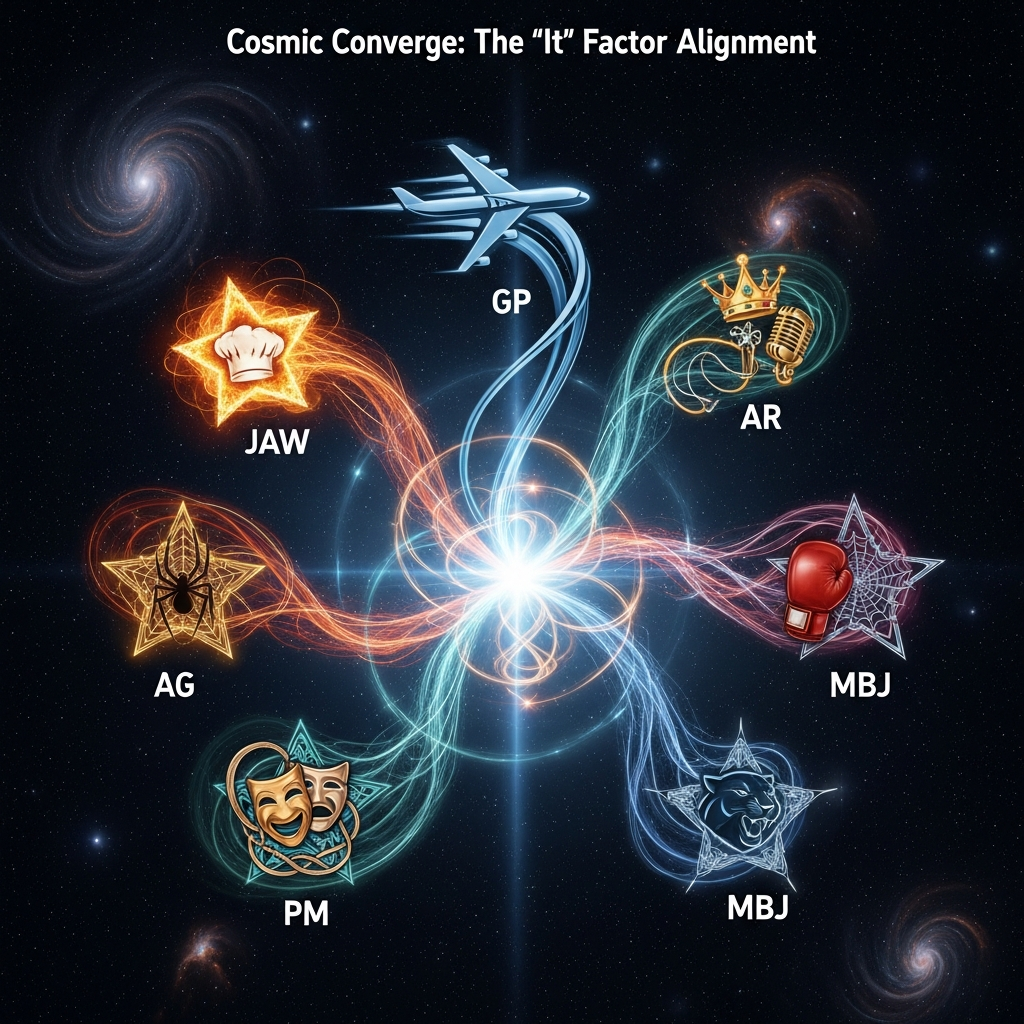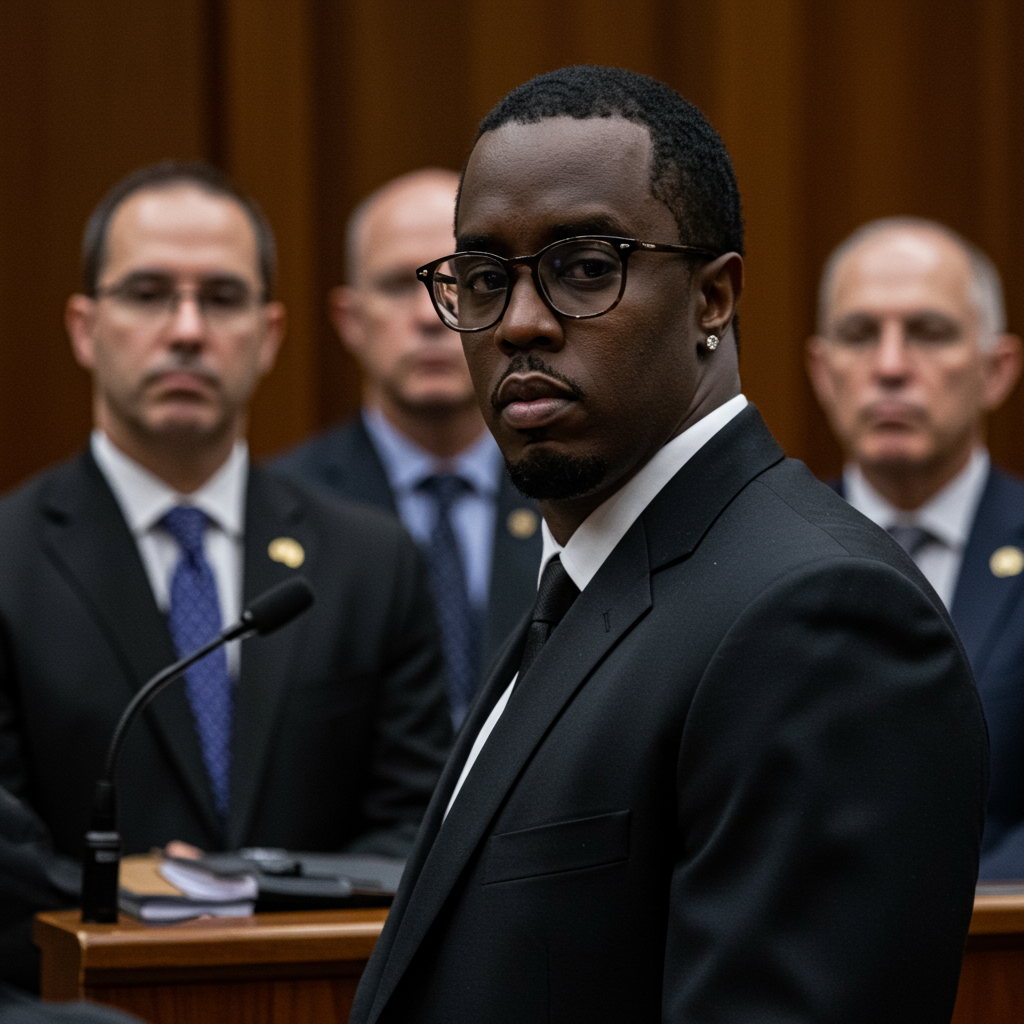Vanity Fair’s highly anticipated annual Hollywood Issue has ignited widespread conversation, prominently featuring an all-male ensemble on its three distinct covers for 2025. This bold editorial choice spotlights a “new class of leading men” and challenges traditional celebrity archetypes. The issue, which includes stars like Jeremy Allen White, Glen Powell, A$AP Rocky, Andrew Garfield, Paul Mescal, and Michael B. Jordan, offers a definitive look at evolving masculinity in cinema. However, its exclusive focus on male actors has also sparked significant debate, prompting questions about representation and the ongoing discussions around diversity in Hollywood.
Global Editorial Director Mark Guiducci, at the helm of his first Hollywood Issue, champions this decision as a deliberate commentary on the current state of the film industry. He argues it’s a strategic shift away from merely predicting Oscar nominees, aiming instead to communicate a specific vision of “Hollywood right now.” This article unpacks the controversial Vanity Fair Hollywood Issue, exploring the rationale behind its all-male lineup, the public reaction, and what it signals for celebrity culture and the media landscape.
A New Generation Takes Center Stage
The 2025 Vanity Fair Hollywood Issue proudly declares, “Let’s hear it for the boys!” It celebrates a specific cohort of actors, marking a departure from Hollywood’s past. The issue features twelve prominent figures, divided across three striking covers. The first cover, set on a beach, showcases Jeremy Allen White, A$AP Rocky, Glen Powell, LaKeith Stanfield, and Callum Turner. A second, captured in a field under an umbrella, highlights Riz Ahmed, Jonathan Bailey, Harris Dickinson, and Andrew Garfield. The final cover, appearing to be shot on a studio backlot, presents Paul Mescal, Michael B. Jordan (making his fourth appearance), and Austin Butler.
Guiducci’s vision for this “new crop of leading men” is central to the issue’s theme. He describes them as “much more radical: mere mortals” – distinct from the studio-fabricated matinee idols of yesteryear or the “puffed-up superheroes” of the ’90s. These actors, ranging in age from 29 to 42, are characterized as “often kind, sometimes vulnerable, each extraordinary.” They are notably “less performative and more human,” a quality that makes them relatable to modern audiences.
The “Internet Boyfriend” Phenomenon
A key insight from Guiducci is the concept of the “internet boyfriend” evolving into a movie star. This generation of actors, he argues, is known parasocially through social media, offering a glimpse into their authentic selves. They embody “good guys rather than strongmen or bad boys,” resonating with a societal preference for authenticity. This shift reflects broader trends where celebrity status is increasingly built on perceived vulnerability and kindness, rather than an untouchable mystique.
Photographed by Theo Wenner in Malibu and London, and styled by Tom Guinness, the men’s fashion reflects this modern ethos. They sport tuxedos reminiscent of the Rat Pack era, yet playfully mix them with ripped jeans or Abercrombie & Fitch shorts. This “high-low” styling, described by some as having an “early aughts energy” and a “Dawson’s Creek” vibe, further emphasizes their relatable, approachable masculinity.
Navigating the Controversy: A Dialogue on Representation
The decision to feature an exclusively male lineup on the Vanity Fair Hollywood Issue has not been without significant public scrutiny. Upon its release, social media platforms buzzed with mixed reactions. While many fans expressed excitement for the featured actors, a substantial number of critics questioned the absence of women. Comments like “What happened to the women?” and “we’ve heard enough of the boys” became common refrains, underscoring concerns about gender balance in the media.
This backlash emerged amidst a sensitive cultural climate. Discussions around diversity, equity, and inclusion (DEI) initiatives are under attack, and worries persist about the MeToo movement “backsliding.” A Celluloid Ceiling report, which monitors female filmmakers, revealed a decline in women directing top-grossing films, from 16 in 2020 to 11 in 2024. These statistics provide important context for the public’s reaction to Vanity Fair‘s cover choice.
Historical Context and Editorial Defense
Guiducci, however, asserts that the all-male cover is not a political statement. He highlights that the Hollywood Issue, which began in 1995, has previously featured solely women 11 times. The very first Hollywood Issue in 1995 was an all-female affair, showcasing icons like Nicole Kidman, Angela Bassett, and Sarah Jessica Parker. For its initial three years, the magazine alternated between all-male and all-female covers before shifting to a co-ed format. This historical perspective demonstrates that single-sex covers are not entirely unprecedented for the publication.
Guiducci frames his decision as a “commentary on Hollywood itself,” rather than a deliberate exclusion. His aim was to capture a specific, evolving dynamic within the industry. By focusing on a particular “new class of leading men,” he sought to make a clear editorial statement. This strategy marks a significant departure from the issue’s earlier role as a predictor of Oscar nominees, a practice Guiducci notes had been copied by competitors.
Vanity Fair’s Evolution Under New Leadership
Mark Guiducci, 37, is Vanity Fair‘s first global editor-in-chief, overseeing editions across the U.S., Spain, France, and Italy. His appointment in June followed the departure of former editor-in-chief Radhika Jones after seven years. Guiducci’s leadership signals a period of significant transformation for the iconic brand. His vision extends beyond a single issue, aiming to champion Hollywood and document its ongoing changes.
Under his direction, Vanity Fair is undergoing several key strategic adjustments. Guiducci has shuttered “The Hive,” a section that focused on business and technology, and while some staffers were laid off, he emphasizes the hiring of 20 new team members. The brand is also enhancing the tactile experience of its print edition by improving paper quality, redesigning its logo, and planning future themed issues to boost their special appeal. Additionally, new newsletters are set to launch, aiming to expand its digital reach.
Embracing Change in a Challenging Media Landscape
Despite these ambitious changes, Vanity Fair faces a challenging digital landscape, with reported traffic down 40% since 2024 to 6.5 million. Condé Nast CEO Roger Lynch has acknowledged that advertising is no longer the primary growth engine for the company, emphasizing the importance of creating “global cultural moments.” Guiducci embraces this reality, viewing the media environment as “fast-changing” rather than “incredibly challenging.” He advocates for adaptability, suggesting that a one-year plan is more realistic than a five-year projection given the rapid shifts in the industry.
The Hollywood Issue itself remains the brand’s biggest release of the year, traditionally kicking off awards season and culminating in the highly anticipated Vanity Fair Oscar party. Guiducci, who once attended as an assistant, now holds the final say over the party’s guest list and red carpet evolution, symbolizing his newfound influence. His overarching mission is to “cheer Hollywood along,” countering what he perceives as a “boring” narrative about the industry’s demise amidst challenges like the pandemic, economic shifts, the MeToo movement, and the threat of AI.
Frequently Asked Questions
Why did Vanity Fair choose an all-male cover for its Hollywood Issue?
Vanity Fair’s Global Editorial Director, Mark Guiducci, explains that the all-male cover for the 2025 Hollywood Issue is a deliberate editorial statement. It aims to capture a “new class of leading men” who represent a departure from traditional Hollywood archetypes. Guiducci wanted to communicate a specific idea about “Hollywood right now” rather than making Oscar predictions. He asserts the decision is not political, noting that the issue has featured solely women 11 times in its history, including its inaugural edition in 1995.
What defines this “new generation of leading men” highlighted by Vanity Fair?
Mark Guiducci characterizes this new generation of leading men as “mere mortals” who are “less performative and more human” than their predecessors. Unlike the studio-molded matinee idols or the “machismo tough guys” of the ’90s, these actors are often described as kind, vulnerable, and relatable. Guiducci refers to them as “internet boyfriends” who have transitioned into movie stars, embodying a societal preference for authenticity and approachable masculinity, often amplified through their social media presence.
How does this Hollywood Issue reflect broader trends in celebrity culture?
The 2025 Vanity Fair Hollywood Issue reflects several key trends in contemporary celebrity culture. It highlights a shift towards valuing authenticity and vulnerability in public figures, moving away from an untouchable, idealized image. The concept of the “internet boyfriend” becoming a movie star underscores the power of parasocial relationships and digital platforms in shaping modern stardom. Additionally, the issue’s controversial reception reveals ongoing public scrutiny and demand for diverse representation in media, pushing major publications like Vanity Fair to engage more directly with social and cultural conversations.
Conclusion
The 2025 Vanity Fair Hollywood Issue is more than just a collection of celebrity portraits; it’s a bold declaration about the evolving landscape of entertainment and media. Under Mark Guiducci’s new leadership, the magazine has intentionally stirred conversation, challenging expectations while simultaneously defining a new era of leading men. While the all-male cover has undoubtedly sparked important discussions around gender representation in Hollywood, it also serves as a potent symbol of Vanity Fair‘s renewed editorial vision. As the industry continues to grapple with rapid changes, this issue positions Vanity Fair at the forefront of documenting, and indeed shaping, the cultural narratives of our time. It champions a Hollywood that is constantly redefining itself, offering valuable insights into the stars, the style, and the very spirit of the industry.


